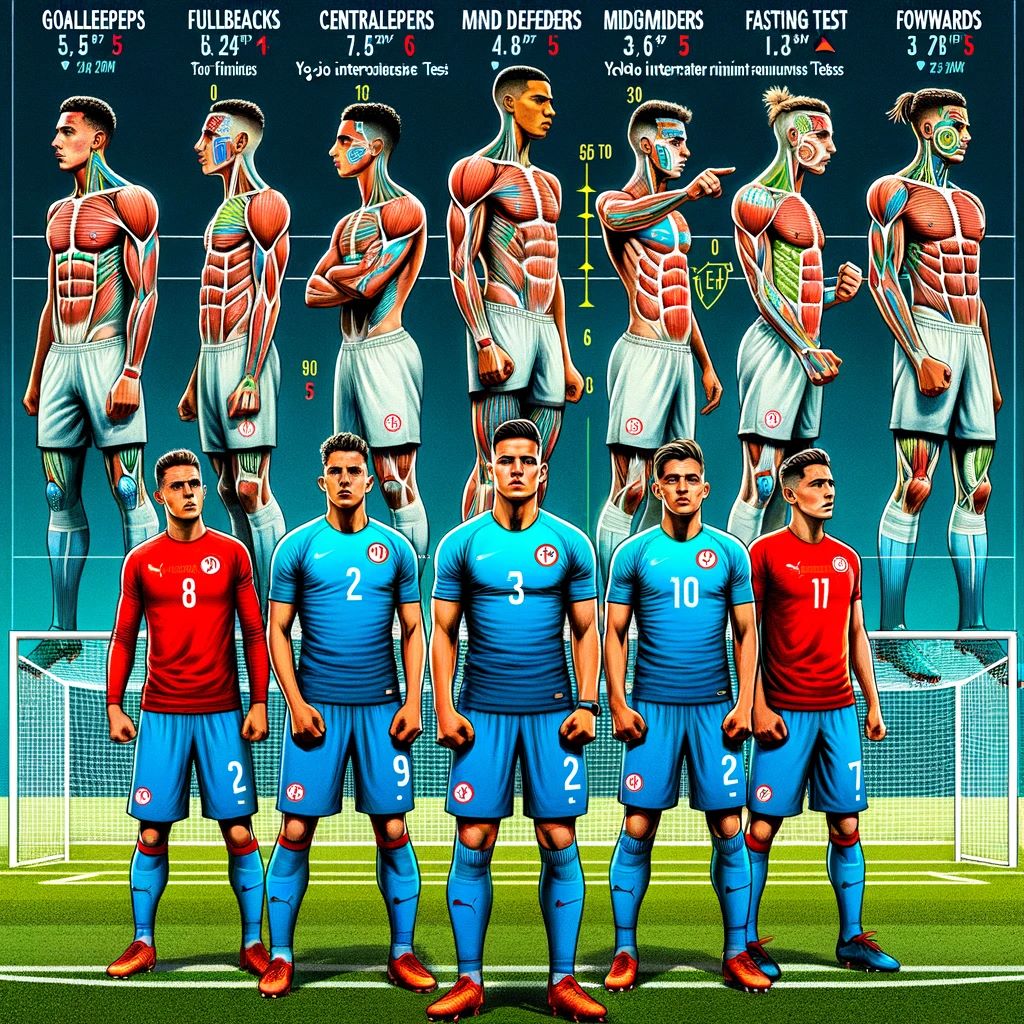Physical and anthropometric profile of Tunisian elite football players according to their playing position: A longitudinal study
DOI:
https://doi.org/10.61838/kman.tjssm.1.1.6Keywords:
Anthropometry, Elite soccer, Performance, Training, YoungAbstract
Purpose. To investigate the development of anthropometric and physical parameters of young Tunisian football players.
Methods. Sixty-two subjects (15.3±0.2 years, 69.4±6.4 kg, 176.9±4.8 cm) playing for the top four professional football clubs in Tunisia took part in the study. They were divided into five groups according to their playing position: goalkeepers (n=10), fullbacks (n=14), central defenders (n=11), midfielders (n=15) and forwards (n=12). Various anthropometric measurements, fitness tests assessing aerobic and anaerobic performance were performed at two times (T): T1 (3 weeks after the beginning of the preparation period), and T2 (End of the competitive period).
Results. Compared to T1, during T2 there were significant increases in height (176.9±4.8 to 179.9±4.3 cm, p<0.01, respectively), five-jump test (11.09±1.22 to 12.24±0.67 m, p<0.01, respectively) and yo-yo intermittent recovery test level 1 (1783±323 to 2716±564 m, p<0.01, respectively), and significant decreases in fat mass (12.3±3.2 to 12.2±2.3%; p<0.05, respectively), 10 m sprint (1.90±0.10 to 1.83±0.11 m; p<0.05, respectively), and 30 m sprint (4.51±0.18 to 4.40±0.22 m; p<0.05, respectively).
Conclusion. An increase in anthropometric characteristics and physical fitness was found in elite young soccer players after a single season of training, but positions were not differentiated

Downloads
Published
Issue
Section
License
Copyright (c) 2023 Mohamed Ali Hammami, Karim Ben Ayed, Rim Mekni, Hatem Ghouili, Mohamed Mansour Bouzouraa, Khaled Trabelsi, Lamia Ben Izzeddine (Author)

This work is licensed under a Creative Commons Attribution-NonCommercial 4.0 International License.



